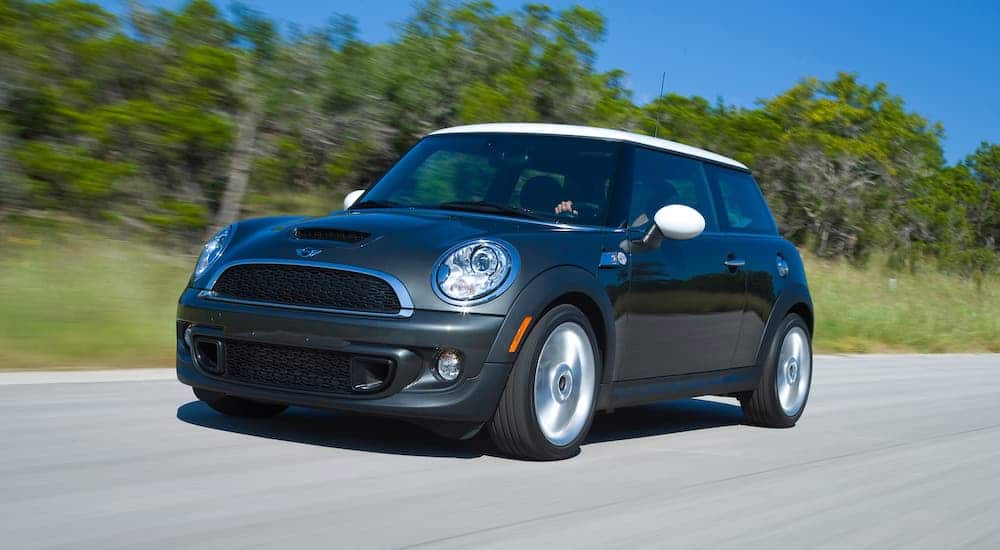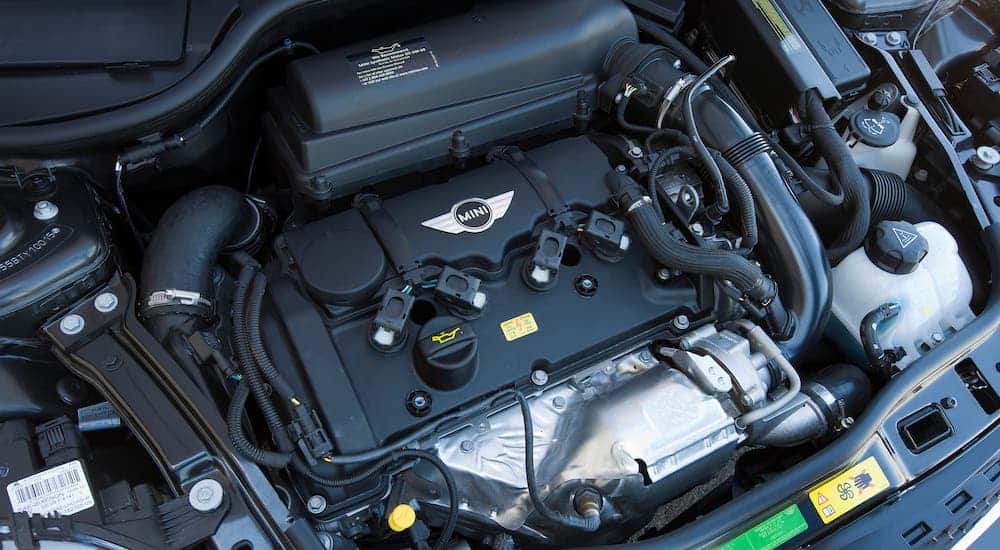The MINI Cooper is the living legacy of classic British design and became an icon of the European racing scene. Today it is still a very popular car, beloved for its cute style, ease of modification, performance, and handling, and size to storage ratio. However, the MINI Cooper also has something of a less positive reputation. Some would consider the MINI Cooper to be unreliable or not worth the known troubles that come with it, resulting in costly repairs or maintenance to the engine.
This is not uncommon for certain used cars, but it does seem to be an unusual stigma that has latched on to the MINI Cooper name among certain circles. This does not mean the MINI Cooper is considered a failure of a vehicle by any means. It rates above average by consumers and among its peers ranks well for annual upkeep. That said, the upside of these known issues is that if you are aware of them and proactive in regular maintenance, those problems can be cut off at the pass.
What are the known speed bumps in the MINI Cooper? What do you need to know in order to best avoid them? How can you ensure that your MINI is going strong for years to come? We will provide you with a guide to these common problems and how to avoid them.
First Gen
The MINI Cooper began with the British Motor Company (BMC) in 1959 as an experiment to maintain a roomy interior while having a smaller overall body that could navigate the crowded London streets. It rose to stardom as a stand out Prix racer and cemented its place in British popular culture. The MINI became one of the most iconic and influential car models of the 20th century.
In the year 2000, BMW purchased the rights to build the MINI and relaunched it with a new facelift and met success. However, unlike the MINIs built from the ’50s all the way to the end of the ’90s, which were built by hand, these modern models are built on an assembly line. Most of the known problems with MINI Coopers that give them their bad reputation were most pervasive from 2000-2006, so these issues have been resolved with improvements in newer models. That being said, it is good to know what problems you may face with older models.
The Usual Suspects
Regardless of the type of car, unless you are buying something brand new, it is good to know what kind of common problems face drivers of your choice of vehicle. It is a matter of what, not if problems will plague certain models. For the MINI Cooper, there are five major things to look out for and be proactive in caring for to ensure it does not end your car’s lifespan prematurely.
Death Rattle (Timing chain)
The first is the worst. The most infamous problem with the early 2000’s model of MINI Cooper is the timing chain. This brings up a common question: What is the timing chain? In most modern cars, this is called the timing belt and is made of a rubber and fiberglass combination. Certain manufacturers like Volkswagen and BMW, use the older and more expensive metal timing chain.
What it basically does is tie together the rotation of the moving parts in your engine. It runs through several pulleys that maintain the tension between the belts. It helps to coordinate between the camshaft and crankshaft as well as maintaining the hydraulic circuit. So basically, it is really important that nothing bad happens to it.
The metal timing chain (which resembles a bike chain) is meant to have a lifespan equal to the car and requires almost no lifetime maintenance, unlike the rubber/fiberglass belts in modern engines. However, the tension of these chains, when malfunctioning can cause serious and costly damage to your engine. When oil pressure causes the beginning of an issue with your timing chain, drivers begin to hear the telltale rattling sound from their engines. Like the ghosts in A Christmas Carol, it is a warning to beware!
The timing chain can be helped with regular oil changes. So stay on top of those. BMW recommends changing the oil every year, once per 15,000 miles. However, since the chain can be such a costly repair if it breaks, it is good to get it done every 6 months or 5,000 miles. Considerably cheaper to get 2-3 oil changes in a year than pay for the replacement and repairs needed for a broken timing chain, which can run between $5,000 to $8,000. You can also keep an ear out for the death rattle sound. Particularly in cold weather, as it can exacerbate the chain if it is beginning to destabilize. The failure of the timing chain is one that can result in the other four problems commonly associated with the MINI Cooper.
Automatic Transmission Failure
The automatic transmission failure is often a result of the manufacturer assuring that it doesn’t need to have its transmission serviced very often. In reality, you should get a routine transmission service every 30-40k miles for your MINI Cooper. This kind of problem is true of most cars, but with the infamous timing chain problem, if some of the chain’s neighbors are not taken care of, it can cause a domino effect on other essential systems.
Power Steering Pump Malfunction
The power steering does what you might expect. The amount of force to turn the wheels is much greater than we give credit for, and the power steering helps make up the difference. You will know that the pump is malfunctioning when you notice the steering wheel becoming very rigid and hard to turn. This is actually a common piece of repair wisdom that many drivers ignore. You should replace the power steering pump filter at least once a year.
Clutch failure
Having the clutch fail on you can be very sudden and shocking, not to mention dangerous. It can also be a slow and gradual process, which is preferable, so you can take note of it and take steps to fix it. You might notice shuddering when changing gears or unusual resistance on the pedal.
Overheating can cause problems with the clutch, so like many of the other problems here, it can be the result of another failing system, which depends on the timing chain. It is recommended for most cars to inspect your transmission every 100,000 miles, but it won’t be cheap to replace if something is wrong. In a MINI Cooper, the transmission could cost you between $1,600-$1,800.
Water Pump Leak
The water pump is very important to the engine as it cycles the coolant in order to maintain a certain temperature within the engine. This problem can be connected to issues with the bad timing chain as the chain helps maintain the cycling of the engine, and if that starts rattling, it often damages the water pump. In order to help avoid this, the same advice is to keep up with regular maintenance.
Prioritize engine cooling maintenance when performing upkeep on your MINI Cooper. The light alloys of the engine provide excellent road performance but are susceptible to overheating, which is what can result in the water pump failing. It is recommended to replace every 50,000 miles.
The average cost of replacing a water pump for the MINI Cooper is $450-$550. Not a cheap replacement, but it is a way better bargain that you will get if you don’t, and something goes wrong. The failure of the water pump because of a leak can cost even more costly engine damage.
The Verdict
MINI Coopers are great cars with exceptional road performance and are perfect for driving around the city. Even the 2011 Countryman model is a great crossover if you want some extra ground clearance and out of city capability. Most of these issues are most prevalent in the older first-generation and should be checked up if you are buying a used model from 2000-2006, but a lot of the tips and guides here are good practice even if your MINI Cooper is on the younger side.
Keep track of mileage and replace certain parts BEFORE they break. It is easy to convince ourselves that if it isn’t broken, it must be working fine. Understanding a car’s pain points and replacing parts before they break can extend a cars’ lifespan and save you a lot of money in the long run.





